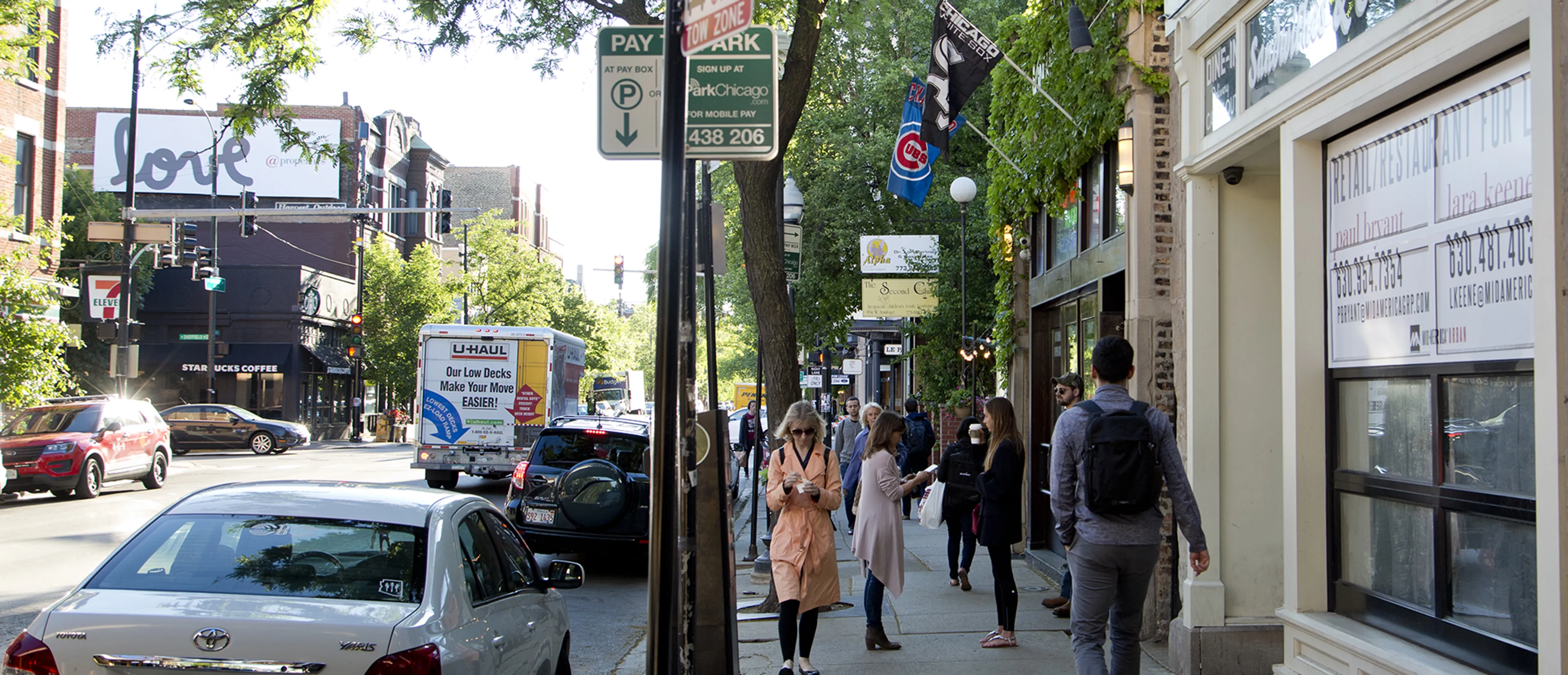History in Lincoln Park
National landmarks
Alfred Caldwell Lily Pool
Located at the north end of the Lincoln Park Zoo, the Alfred Caldwell Lily Pool is a prime example of Prairie School architecture. It was designated a Chicago landmark on November 6, 2002, and a national landmark on February 17, 2006. It is lcoated at Just south of West Fullerton Parkway between North Stockton and North Cannon Drives in the Lincoln Park neighborhood of Chicago.
Cortland Street Drawbridge
This 128-foot long bridge was designated a landmark on July 24, 1991. The Encyclopedia of Chicago asserts that this bridge design is the type "Chicago engineers are perhaps most famous for."
Abraham Lincoln Monument
You don't need to venture too far in the city to see signs of president Abraham Lincoln. Take this monument in Lincoln Park, "Standing Lincoln." It is one of five different statutes honoring Lincoln's achievements located throughout the city. Designed by Augustus Saint-Gauden and completed in 1887, the bronze statue depicts lincoln rising from a chair, about to give a speech. Lincoln's only grandson, Abraham Lincoln II, was present at the unveiling. Hull House founder Jane Addams was particularly fond of the statue. "I walked the wearisome way from Hull House to Lincoln Park...in order to look at and gain magnanimous counsel from the statue," she wrote. It was designated as a landmark on December 12, 2001.
Arlington Place District
This section of Lincoln Park was Designated as a landmark on November 15, 1989.
Arlington-Deming District
This section of Lincoln Park was Designated as a landmark on September 27, 2007.
Armitage-Halsted District
This patch of Lincoln Park was designated a Chicago landmark on February 5, 2003.
Biograph Theater
The biograph theater was designed by Samuel N. Crowen in 1914 and originally showed movies. The Biograph is best known for being the theater John Dillinger exited before he was gunned down in a nearby alley on July 22, 1934. Today it is home to Victory Gardens Theater Company. It was designated a landmark on March 28, 2001.
Bissell Street District
This one-block stretch in Lincoln Park was designated a landmark on September 5, 2007. The unique thing about this section is that all 20 buildings were designed and built as a single development by architect Iver C. Zarbell. The three-, six-, or nine-unit buildings have a unified layout, unlike most other chicago residential blocks.
Burling Row House District
Built in 1875 by Edward J. Burling, this section of housing was designated a landmark on November 15, 2000.
Elks National Memorial Headquarters Building
Built between 1924 and 1926, this building was erected to honor the Elks who served in World War I. Elks rededicated the memorial in 1946, 1974 and 1994 to honor the veterans of World War II, the Korean War, the Vietnam War, and later conflicts. The building also serves as the national Elks headquarters, and the city designated it a landmark on October 1, 2003.
Francis J. Dewes House
The Francis J. Dewes House was designated a landmark on June 12, 1974. Dewes emigrated to Chicago in 1868, accepted a bookkeeping job with a brewing company and founded his own brewing firm in 1882. Dewes was born in Prussia and the mansion supposedly reflects his European background.
Fullerton State Bank Building
This building was designated a landmark on July 9, 2008.
Kaufman Store and Flats
The Kaufman store and flats is one of Adler and Sullivan's oldest surviving buildings. Today only certain parts of the building are accessible to the public, as the remainder contains private residences and businesses. It was designated a landmark on April 16, 1996.
Lincoln Park Zoo Lion House
The lion house at the Lincoln Park Zoo was designated as a landmark on November 30, 2005. Built it 1912, the house contains african lions, amur tigers, leopards from Asia and Africa, jaguars from South America, and snow leopards from the Himalayas.
Roslyn Place District
This section of Lincoln Park was Designated as a landmark on November 15, 1989.
History in Lincoln Park
Alumni
Francis W. Parker School
Colonel Francis Wayland Parker founded the private school that bears his name in 1901 at 330 West Webster Avenue. Notable alumni include Pulitzer Prize-winning playwright David Mamet, actresses Daryl Hannah, Jennifer Beals, Hillary Wolf, and Anne Heche, and musician Natalie Bergman (of Wild Belle).
Lincoln Park High School
Before this school was known as Lincoln Park High School, it was called North Division High School. It opened in 1875 as the first public high school on the north side of Chicago at 2001 North Orchard Street. Lincoln Park High School's main building opened in 1900 as Robert A. Waller High School. The school has been known as Lincoln Park High School since 1979. Its best known alumnus is Illinois secretary of state Jesse White, who also founded the Jesse White Tumbling Team. Actor Freddy Rodriguez, who starred in HBO's Six Feet Under as Federico 'Rico' Diaz also attended Lincoln Park High.
History in Lincoln Park
Mobsters
St. Valentine's Day Massacre
On February 14, 1929, two men posing as police officers and two men dressed in trenchcoats entered the S.M.C Cartage Co. garage at 2122 North Clark Street owned by George "Bugs" Moran, lined seven men against the wall, and opened fire with submachine guns, shotguns, and a revolver, killing various members of Moran's North Side Irish gang. Al Capone's South Side Italian gang was largely believed to have been behind the attack, but officials could not prove Capone's involvement, as he was in Miami on the day of the murders. No one was tried, let alone convicted, in connection with the killings. Encyclopedia of Chicago writer Christopher P. Thale effectively summarizes the massacre, which "left the public in shock and...came to symbolize gang violence. It confirmed popular images associating Chicago with mobsters, crime, and spectacular carnage." The warehouse was razed in 1967.

